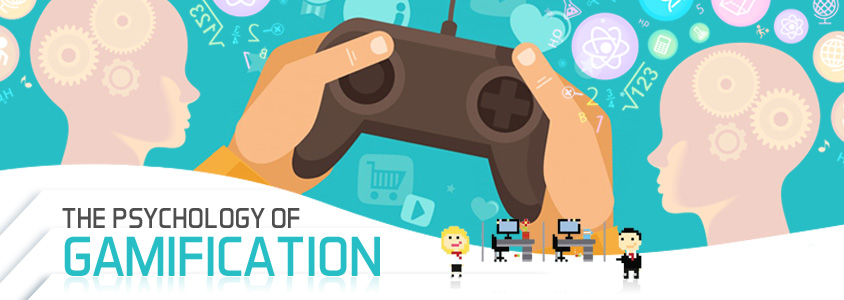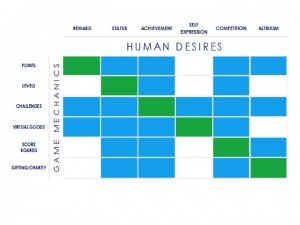
THANK YOU
FOR YOUR INFORMATION
One of our expert will be in touch with you…

What does it make a game so addictive and appealing? We try to answer this question by presenting the Game Mechanics and Dynamics graphic so you can have an idea of how the human mind works and triggers with game exposure and can be used for gamification in eLearning. Understanding the psychology and theory of this in the Gamification in eLearning context is as important as designing and planning a virtual course.

On top of the chart, we can see basic human emotions and desires such as reward, status, and achievements which are at the same time, buttons that get push by games. So for instance, little kids that don’t tend to have sense of those human desires, unless not on a conscious level, can get those emotions when playing on a laptop or on their parents’ cellphone. They don’t have power, resources or freedom but games gives them exactly that. They give an opportunity to own status and through those LMS platforms, people can fulfill basic human desires.
As you can see in the image, the green squares show certain desires triggered by an specific game mechanic. The virtual world gives people all those gamification benefits, and that is what makes games so addictive. If you find the perfect balance between those two elements and combine technology and psychology, you will have a successful game as result.
 This theory is directly associated with emotions. Education as we have known it so far is more plain and lack of emotions. If we think about it, we used to feel real emotions when having a presentation or having a test back. In contrast, people have emotions every few seconds when playing a game.
This theory is directly associated with emotions. Education as we have known it so far is more plain and lack of emotions. If we think about it, we used to feel real emotions when having a presentation or having a test back. In contrast, people have emotions every few seconds when playing a game.
There are three main physiological components of gamification that makes the learning experience different from any other strategies of traditional education: efficacy, safety which refers to the safe environment to fail, and personalization. Students can control environment inside games and not expose themselves in a classroom in front of everyone when they don’t know the answer and none of these happens inside education environment. From the teacher point of view, gamification can help in terms of productivity as it encourages students to share their knowledge and creates a collaboration environment.
If educators took that theory into the eLearning world, they would be allowed to tie together abstract skills under a game platform: reading, comprehension, analysis, among others; while giving their students more opportunities to master knowledge than in real world. Gamification in eLearning is more than a concept, is an educational practice that if used in a proper way, gives amazing results to both teachers and students.
The use of Gamification in eLearning
Call us now at +1 800 513 5902 to talk with an LMS expert today, email us at sales@paradisosolutions.com or chat by clicking on the bottom right side!